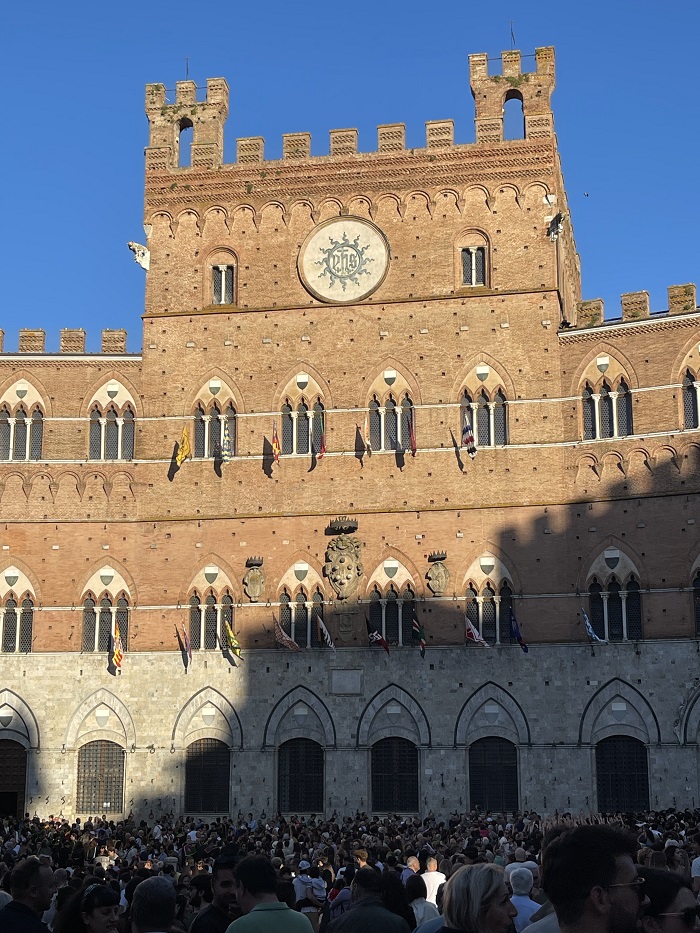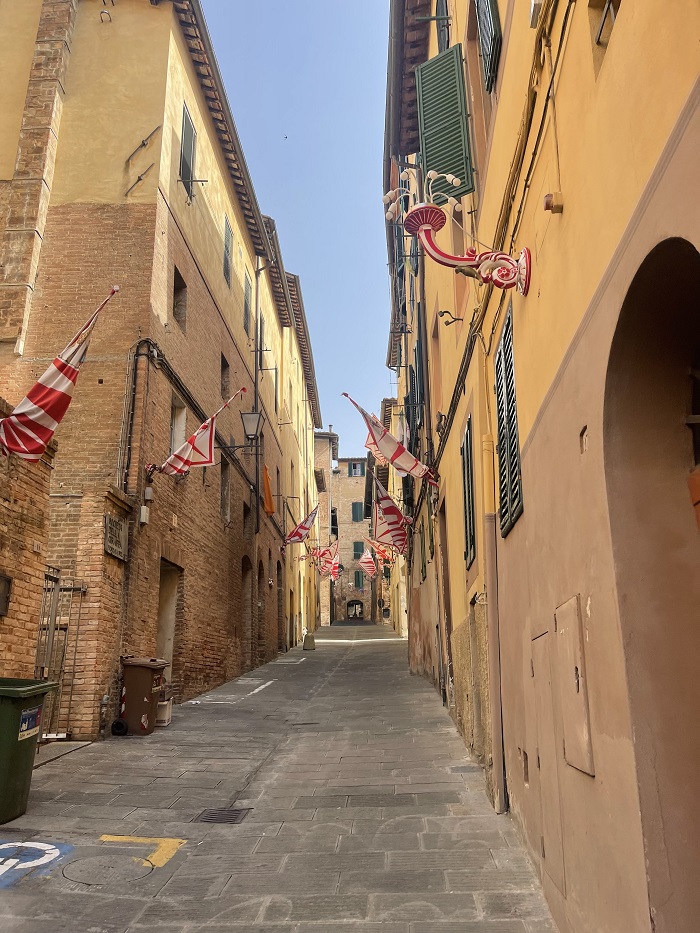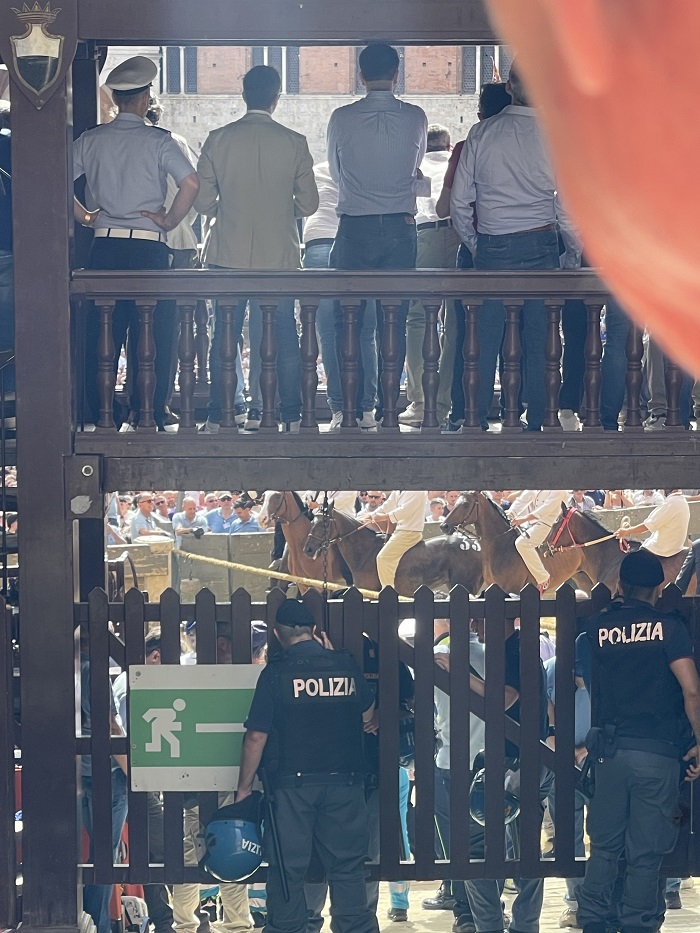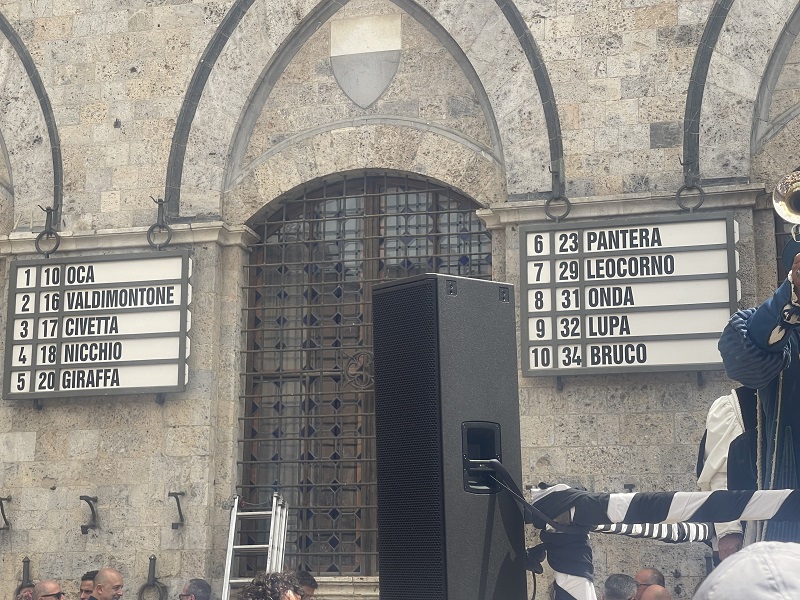Written by Eliza Ward (Meredith College), Student Correspondent for CET Siena, Summer 2024
In Italy, many regions and cities have their own significant traditions. In Siena, however, the most significant tradition to experience is the Palio. Occurring twice each year on the 2nd of July and the 16th of August, the Palio is a horse race held in the Piazza del Campo. 10 of the 17 contrade, or districts, are chosen randomly by a lottery system to participate in the race. Many events lead up to the grand event. Within this blog, you will get a brief overview about the historical Palio tradition in Siena.
The Beginning and Evolvement of the Palio
The tradition of the Palio began between the years of 1200 and 1300, and each race is dedicated to the Virgin Mary, the protector of Siena. The race, however, has been evolved overtime. It began as the Palio alla Lunga (the long race), which took place outside of the city walls. Around the year of 1600, it was moved inside of the city walls. Then, in 1700, the race was placed in the Piazza del Campo and continues there to this day.
The Lottery Process
On the 26th of May, or around late May, the lottery process begins by a random selection of the 10 districts who will participate in the race. Many people from each district wait eagerly in the piazza as an official will place the flag outside of the Palazzo Pubblico. Some cheer as their district has been chosen, while some cry if they’re not participating, as this tradition is very important to them for representation.

Festivities
Each week before the race begins, a district will be represented. Flags decorate outside of the streets with many evening plans such as dinners and parties. I had the joy of participating in the Pantera (panther) dinner, along with going to the Chiocciola (snail) and Giraffa (giraffe) contrada parties.



(Left) The flags from the contrada of the giraffe are presented out in the streets for their week of representation. (Middle) The contrada of the giraffe had a flag performance in the Piazza Provenzano! (Right) I had the opportunity to join with the contrada of the panther for a dinner!
Horsin’ Around: Trials and Assignments
On the 27th and 28th of June, the trials are conducted for many horses. This is how they’re chosen to race in the Palio. Once the trials have ended, 10 horses are selected to be in the Palio. Afterwards, it is time to assign each horse to a district. Similar to the lottery process for the chosen districts to participate in the Palio, a number (representing the horse) and a district will be paired together. If you see people jumping, they’ve received a good horse. Until the Palio begins, the fantini (jockeys) will try their horses from the 29th of June to the morning on the 2nd of July. The jockeys will wear the colors of the contrada they are racing for.

July 2nd: The Official Day
After the last trial has ended, it is now time to prepare for the official race! First, the horses will be blessed in the main church of each district. The neighborhood priest, or the Correttore, will say to the horse, “Go and come back a winner.” Afterwards, the parade in the piazza will begin. This is known as the Passeggiata Storica (historical walk), where people wear medieval costumes and play the drums. Finally, the race begins. The race consists of three laps in 90 seconds. Whoever wins the Palio receives a drappellone (banner). The banner consists of the Virgin Mary over the city of Siena with the 10 competing districts.
That concludes the brief history of the Palio in Siena! I hope you all enjoyed learning about this Sienese tradition. Until then, a presto (see you soon!)
